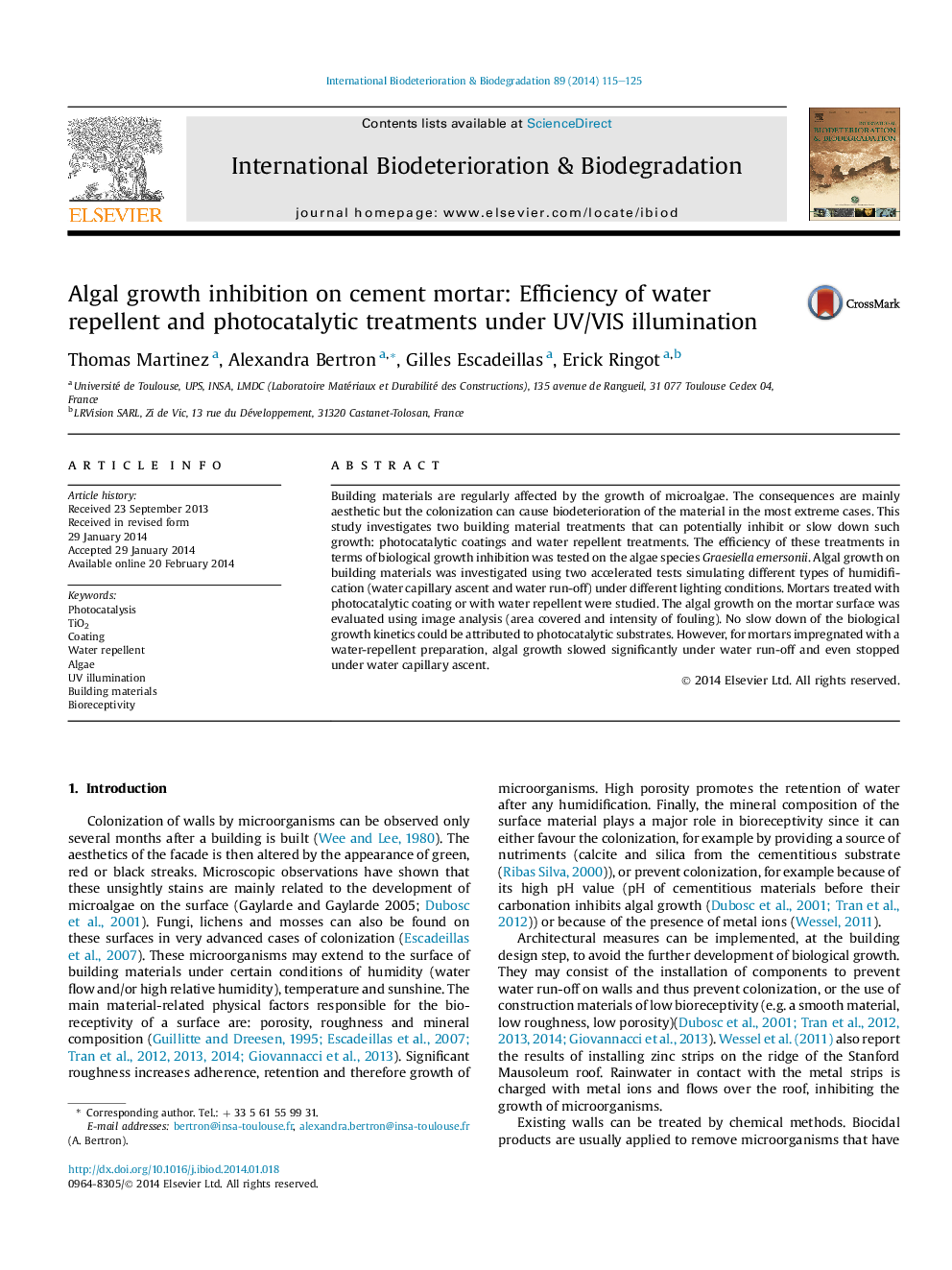| Article ID | Journal | Published Year | Pages | File Type |
|---|---|---|---|---|
| 4364846 | International Biodeterioration & Biodegradation | 2014 | 11 Pages |
•Antifouling effects of water repellent and photocatalytic treatments were studied.•Fouling by algae was assessed by image analysis.•Kinetics of cement mortar fouling was lowered when UV light intensity increased.•Photocatalysis had no significant impact on the colonization kinetics of Chlorella on mortar.•Water repellent treatment enabled algal fouling on mortar to be slowed down or inhibited.
Building materials are regularly affected by the growth of microalgae. The consequences are mainly aesthetic but the colonization can cause biodeterioration of the material in the most extreme cases. This study investigates two building material treatments that can potentially inhibit or slow down such growth: photocatalytic coatings and water repellent treatments. The efficiency of these treatments in terms of biological growth inhibition was tested on the algae species Graesiella emersonii. Algal growth on building materials was investigated using two accelerated tests simulating different types of humidification (water capillary ascent and water run-off) under different lighting conditions. Mortars treated with photocatalytic coating or with water repellent were studied. The algal growth on the mortar surface was evaluated using image analysis (area covered and intensity of fouling). No slow down of the biological growth kinetics could be attributed to photocatalytic substrates. However, for mortars impregnated with a water-repellent preparation, algal growth slowed significantly under water run-off and even stopped under water capillary ascent.
